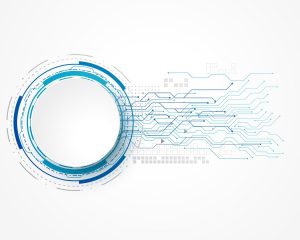The abbreviation ERP stands for Enterprise Resource Planning. In order to remain competitive and ensure your own business success, speed is of the essence in the modern economy. In order to meet market developments in a particularly innovative and dynamic way, it is very important to organize internal processes so that attention and resources can be directed to the really important things. ERP systems have become indispensable. However, choosing the right ERP system can mean the difference between great success and ultimate ruin. So what factors are important when choosing the right ERP system? And what does ERP actually mean?
How an ERP system works
ERP (Enterprise Resource Planning) deals with the planning and coordination of resources in a business context. The aim of an ERP system is to interactively map all areas and business processes of a company in order to use resources such as capital, personnel, operating resources, materials and information and communication technologies strategically and profitably. The result is high productivity such as continuity, efficiency, security of supply, quality, flexibility and low throughput time and capital commitment, which is reflected in a general increase in competitiveness. This is realized through IT systems that are designed according to industry requirements and are composed of many modules according to demand. The functionality of an ERP system is based on the principle that the various modules store the data generated throughout the entire business process from all areas together in a database. Functional demarcations are thus eliminated and all areas, such as materials management, finance and accounting, human resources, sales, marketing, research and others, are linked together on a new, organized level.
The advantages of an ERP system
Implementing an ERP system has a number of advantages. On the one hand, the integration of information and applications in their entirety reduces and facilitates the throughput speed of various work processes. Work processes are usually already put to the test when the ERP system is introduced. Best practices and adherence to compliance rules, such as procedural documentation, are often supported by the software.
ERP software has a modular design and links the data from different areas in the company, allowing all employees to access the relevant data from the other areas and everyone benefits from uniform and complete information. Merchandise management and warehousing, sales and service, accounting and project management – all areas are linked in one database and can be compared with each other. This provides valuable information on how long it takes to sell stock, what the best-selling products are, the most profitable sales channels and much more. This interdisciplinary collaboration is made possible through the use of document management and project management systems, enabling teams in distributed locations to work together on the same resources without exposing valuable business information to the public.
The integration of complete, reliable and up-to-date figures from all departments enables flexible and meaningful reports. Both standard reports and individual evaluations can be created. The result is customized reporting that provides information at all levels of the company, from the managing director to the head of department to the administrator. Data is never entered twice, which prevents transmission errors and inconsistencies. Invoices can be created automatically, completely and correctly as items and accounting data are transferred from the other areas. Reporting/controlling, for example, does not receive any contradictory information on the same facts.
However, the main benefit of an ERP system is the overall cost reductions that can be observed when implemented correctly. Once business processes are smoothly integrated, practices such as just-in-time deliveries and services are made possible through resource optimization. Keeping staff and excess storage capacity on hand is avoided and electronic accounting ensures that all legal requirements are met. At the same time, the digital archiving of documents saves office materials and personnel, and above all one thing: money.
Disadvantages of an ERP system
However, although ERP systems prove time and again that they have the potential to take companies to a whole new level, there are also aspects that can speak against an ERP implementation. This is because the introduction of an ERP system is often associated with high costs and a long, complicated integration process that can take several years. A constantly changing global economy forces companies to constantly evolve in order to remain competitive. If the business processes change, the ERP system must also change at the same time, which means a lot of effort in terms of customizing, training and maintenance. Outdated systems can have a demotivating effect due to complicated user interfaces. And individual licensing models can lead to a high level of dependency on the manufacturer of the ERP system. These aspects make small companies in particular refrain from deciding on an ERP system for the time being.
The different ERP models
With ERP systems, a distinction is usually made between on-premise software and SaaS systems. On-premise describes a model in which the system is implemented on private servers and hardware on site, which means the advantage of absolute control over your own IT infrastructure and independence from external service providers. However, on-premise software entails high costs for the company’s own systems, independent administration and maintenance and therefore the use of its own IT staff.
With SaaS (Software-as-a-Service) systems, on the other hand, software and IT infrastructure are operated by an external service provider and are usually used via a web browser. This saves you high costs for your own systems and employees, gives you flexibility in customizing and using more specialized modules and has the advantage of working with experts that you don’t have to hire separately. However, despite the high security standards, there is always a certain risk of losing sensitive data if you give it away. This aspect and the fact that you become dependent on the support of an external service provider can speak against a SaaS solution.
Another term on the ERP market is open source software (OSS), which is free to use and has an open source code so that you can adapt it to your own processes as you wish. However, this again requires programming skills or IT service providers, which means a high expenditure of time and money.
For those who cannot decide which system is best for their own interests, there is also the option of using hybrid ERP systems. This can work in such a way that, for example, some parts of the system are operated in your own company, while other areas are processed in the cloud. Or you can decide to consolidate several ERP providers at the same time and design your ERP system according to your individual needs.
ERP systems: SAP, Oracel and more
By far the most widespread ERP system in the world is that of the German company SAP, which began developing standard user software for the real-time processing of business data in 1972. What was initially conceived as a financial accounting system continued to develop and over time more and more modules were added, which is still SAP’s trademark today. Other big names in the ERP market are Oracle, Infor and the software giant Microsoft.
Anyone working in e-commerce knows how important it is to be flexible in your own business processes and adaptable to the rapidly changing world of online retail. High demands on short delivery times, perfect customer service and low prices are constantly driving up expectations of e-commerce sellers. ERPs can help to keep the effort for retailers as low as possible, especially when selling via multiple sales channels, in order to be able to react quickly to the whims of the market and the growing demands. Ideally, the software automatically connects to the online store, automatically records the orders and the associated incoming payments and outgoing goods in its own system, triggers a repeat order with suppliers and prepares the documents for shipping. There are numerous ERP providers whose offerings can be specifically geared towards online businesses, such as Plentymarkets. The SaaS provider integrates a multichannel connection between various marketplaces, including Amazon and eBay, and also offers the option of linking the system to your own systems as middleware.
Choosing your own ERP system
Many companies find it difficult to decide which ERP system is right for their needs or whether the time is right for an ERP implementation. And rightly so when you consider that there are around 300 different standard ERP solutions and around 1,500 industry-specific module solutions.
When making such decisions, you must always be guided by your own needs. The question should normally not be how to best adapt to the system, but how the system can support you in advancing your own goals more efficiently. It is helpful to take your own business plan to hand and, with the help of external consultants, training courses or tools such as a “requirements specification”, a list of requirements that can be used to systematically work out what you expect from an ERP system, consider what you really need to make progress towards your goals.



